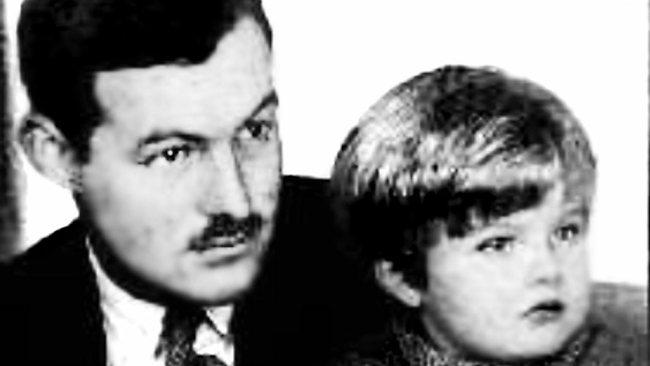Scrapbooks show Ernest Hemingway's early life
SCRAPBOOKS documenting the childhood of Ernest Hemingway - from nappies to high school degree - have been made available online for the first time.

Tech News
Don't miss out on the headlines from Tech News. Followed categories will be added to My News.
LONG before Ernest Hemingway first wrote a story, his mother was busy writing about him.
Grace Hall Hemingway started a series of scrapbooks documenting the childhood of the future Nobel and Pulitzer Prize winner by describing how the sun shone and robins sang on the day in July 1899 when he was born.
Starting today, the John F. Kennedy Presidential Library and Museum in Boston will make the content of five Hemingway scrapbooks available online for the first time, giving fans and scholars the chance to follow the life of one of the 20th century's literary greats from nappies to high school degree.
Hemingway Collection curator Susan Wrynn said much of the content hasn't been made available to the public before and only a few researchers have seen it in its entirety. The fragile leather-bound volumes have been kept in a dark vault for about four decades to keep them from falling apart.
The release of these records from the archive, home to 90 per cent of existing Hemingway manuscript materials, will come on what would have been the scribe's 114th birthday.
"I think it will be a very rich resource for people interested in learning about this period of his life," Sean Hemingway, the author's grandson, said. "He had tremendous talent. It must have been there from the beginning. So I'm sure there are clues in there to that."
Pennsylvania State University professor Sandra Spanier, who is general editor of a project that will publish Hemingway's letters in more than a dozen volumes, said the scrapbooks that the author's mother created offer details of his daily life up until age 18 that aren't anywhere else.
"She almost made their lives into a story ... and I think that carries over into his life and his fiction," she said.
There's a scribbling from when Hemingway wasn't quite three years old that the future war correspondent and novelist - who later won a Pulitzer Prize for The Old Man and the Sea - told his mother depicted the roaring sea. Other early passages also hinted at the writer Hemingway would become.
Before he was four, Hemingway was trooping into the woods to go hunting with his father and "using long words" and making "sage remarks," according to his mother, who enclosed photos of her son trout fishing and holding his own rifle.
"Can cock my own gun," one of her captions read.
By the time Hemingway was five, his mother noted that he was collecting war cartoons and had an appreciation for characters with courage.
"He loves stories about Great Americans," she wrote.
The scrapbooks have a plethora of family photos from the Hemingway family's home in Oak Park, Illinois, and their vacation cottage on a lake in Northern Michigan, including shots of a bare-bottomed baby Hemingway playing in the water by a canoe.
They include letters to Hemingway and others he wrote as a child, including a note of contrition in which he confessed to bad behavior in church.
"My conduct tomorrow will be good," 13-year-old Hemingway promised.
The scrapbooks also contain childhood paintings and tell of Hemingway playing the cello, suiting up for a "lightweight" football squad and taking up boxing. During his junior year of high school, he was on his school's prom committee and, according to a report card note from his Latin teacher, showed "improvement both in attitude and work."
As Hemingway matured, the scrapbooks showcased his earliest attempts at the craft that would come to define his professional life. Among them were a short story from his high school's literary magazine, clippings from some of his first assignments as a high school newspaper reporter and a sonnet in which 16-year-old Hemingway seemed to poke fun at himself.
"Nobody likes Ernest, that, is straight stuff," he said, "and when he writes stories - we all cry 'Enough.'"
The scrapbooks are part of the collection that Hemingway's widow, Mary, gifted to the JFK Library and Museum after the author's 1961 suicide. Sean Hemingway said he's excited by their public release and called them one of the ways he's become familiar with a grandfather he never met.
"He died before I was born," the 46-year-old said. "Looking at these kinds of things ... I feel like I have gotten a chance to know him a bit."
